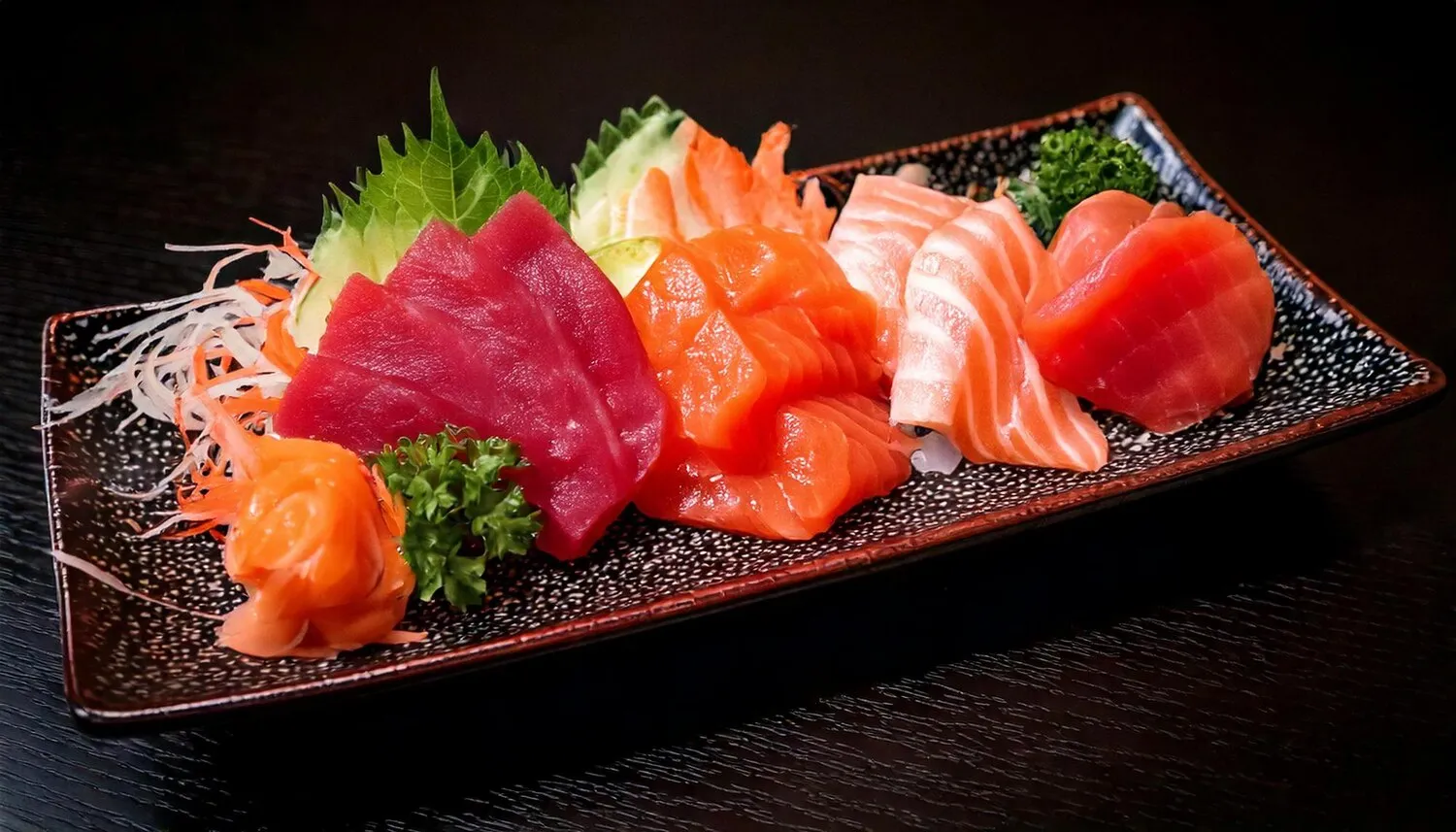
Sashimi
Thinly sliced raw fish served without rice.
Nutrition Facts
* The % Daily Value (DV) tells you how much a nutrient in a serving of food contributes to a daily diet. 2,000 calories a day is used for general nutrition advice.
Sashimi's origins are intertwined with the development of Japanese culinary arts, evolving from simpler preparations of raw fish to a sophisticated display of skill and appreciation for the natural flavors of the ingredients. Its early forms likely emerged as a practical way to consume fresh seafood, particularly among coastal communities.
Sashimi is deeply embedded in Japanese culture, representing respect for nature, the importance of freshness, and the artistry of presentation.
Freshness is Paramount
The quality of sashimi hinges on the freshness of the fish. It's often sourced directly from the ocean or meticulously handled to ensure minimal time passes between catch and consumption. This emphasis on freshness reflects a broader Japanese cultural value of appreciating the natural world.
Knife Skills and Presentation
The preparation of sashimi is an art form, requiring highly skilled chefs who can precisely slice the fish to enhance its texture and flavor. The arrangement of the sashimi on the plate is carefully considered, often reflecting natural elements and seasons, showcasing the chef's artistry.
Social Dining
Sashimi is often enjoyed in social settings, such as family gatherings or business meals. Sharing sashimi fosters a sense of community and appreciation for the food and company.
Sashimi highlights the pure, delicate flavors of the fish, complemented by subtle umami notes and fresh, clean accents.
The primary flavor profile is defined by the type of fish used, ranging from the rich, buttery texture of tuna (maguro) to the delicate sweetness of sea bream (tai) or the briny tang of scallops (hotate). Wasabi provides a sharp, cleansing heat, while soy sauce adds umami and saltiness. Garnishes like shiso leaves or daikon radish offer refreshing herbal or peppery notes to balance the flavors.
Soy Sauce Usage
Avoid saturating the sashimi with soy sauce. A light dip is sufficient to enhance the flavor without overpowering the fish. Consider using low-sodium soy sauce to further preserve the delicate taste.
Wasabi Etiquette
Instead of mixing wasabi into the soy sauce, place a small amount directly onto the sashimi. This allows you to control the intensity of the spice and prevents the wasabi from clumping.
Eating Order
Start with milder-flavored fish, like white fish (tai or hirame), and gradually progress to richer, oilier varieties like tuna or salmon. This helps you fully appreciate the nuances of each fish.
Enjoy with Sake
Pairing sashimi with a good sake can enhance the overall experience. Dry, crisp sakes often complement the flavors of the fish.
Explore additional Raw fish dishes and restaurants
Explore Raw fishDiscover top dining spots and culinary experiences in Milano.
Explore MilanoLearn more about the food culture, restaurant scene, and culinary heritage of Italy.
Explore Italy